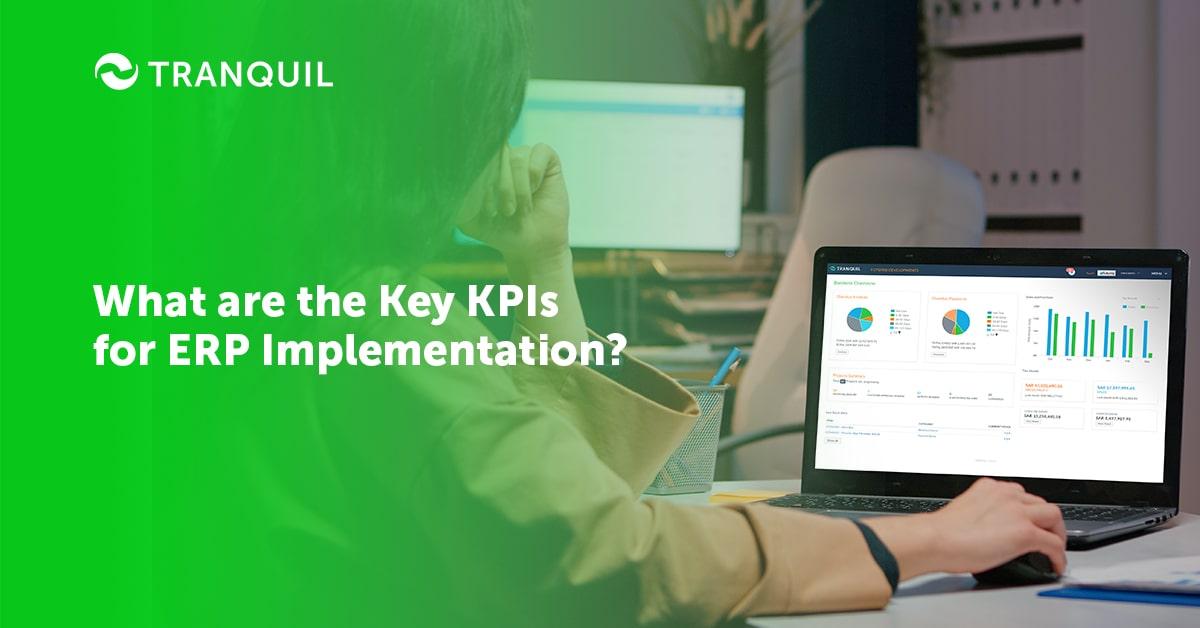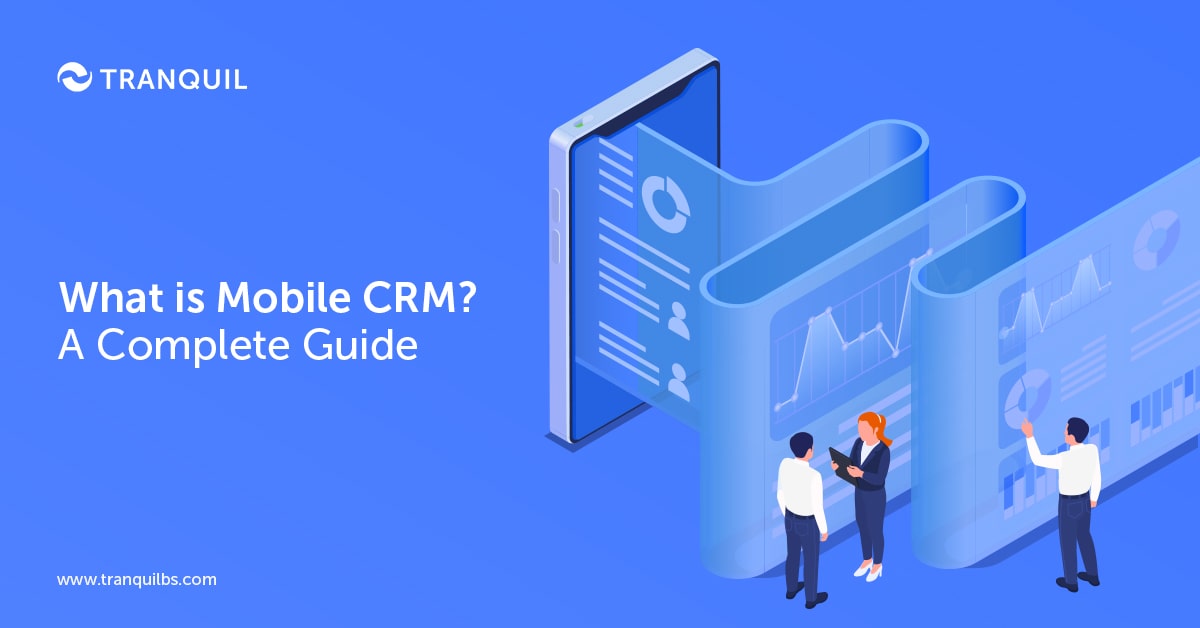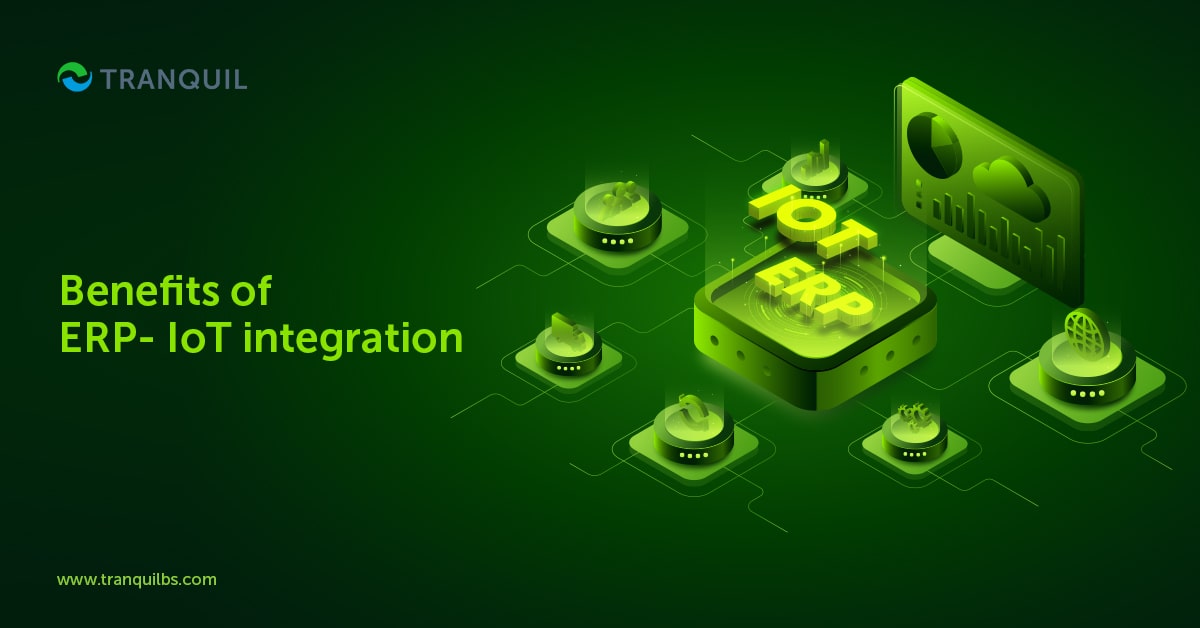
What are the Key KPIs for ERP Implementation?
Implementing an ERP is a time-consuming and disruptive venture, but it affords companies the means to redefine their strategic goals and improve their business processes.
When you successfully implement an ERP system like Tranquil, it can spur innovation, improvement, enhanced collaboration, and overall efficiency in your organization.
Centralizing data rather than maintaining it in silos brings all the decision-makers on the same page.
When a company has unflinching support from the management, excellent change management programs in place, exemplary due diligence, and so on, its ERP implementation is likely to be smooth and successful.
The ERP solution is often deployed in several phases – it begins with discovery, moving on to business requirement documentation, planning, and deploying the software.
Tech support is also provided post-implementation.
When the KPIs for ERP implementation commencement are good, the chances of the deployment being well aligned with the business goals are higher.
It will also enable the company to derive greater value from the new system.
ALSO READ: How Does Landed Cost Affect the Cost of Inventory?
Important ERP Implementation KPIs to Know
As companies extract value from their ERP software for several years, it is essential to track long-term KPIs in addition to the short-term ones.
Only then will you be able to ascertain how close your business is to achieve its strategic goals.
Once the software is deployed, tracking the following KPI ERP can help you get a definitive picture of its success along with areas that you need to fine-tune your ERP strategy.
1. Downtime
This may come as a surprise, but believe us, it’s an important one – in fact, one of the most important.
One of the reasons you opt to implement ERP is to reduce or eliminate downtime.
Hence, it is sensible to keep an eye on how well the ERP is achieving this goal.
Make a record of the frequency of the downtime and how long it lasts, along with the causes for the same.
This will help you recognize the recurrent problems, allowing you to resolve them and improve performance in the future.
This is one area where you need the numbers to stay down.
ALSO READ: Guide on ERP Configuration vs ERP Customization
2. Adherence to Schedule
This refers to how well your ERP helps you in maintaining the production schedule you want to have.
It is again a critical KPI; after all, timely completion of projects and increased productivity is one important goal of ERP implementation.
A robust ERP solution will ensure that the gap between the scheduled production and actual production is as low as can be.
If that is not the case, it means that something is going askew, and it needs to be fixed.
3. Inventory Turnover

This important KPI ERP system measures the quantity of inventory sold in a specific time period.
ERP helps automate processes and offers improved visibility, which should ideally increase the inventory turnover.
Let’s say you find that the inventory of a specific product is always in excess; in that case, your ERP will be able to assess what quantity of that product you need to stock in the future.
Based on the purchase behaviour of consumers, the ERP can forecast the sales for the near future in just seconds.
While this can be done manually, it would take a very long time.
When you divide your sales by your average inventory, you get the inventory turnover ratio.
ALSO READ: Common Inventory Management Problems and Solutions
Let us suppose that you have defined a target of selling 20,000 pairs of socks each week.
When you implement your ERP successfully, it will track the sales closely and offer visibility into your inventory process as well as ways to sell more products.
The inventory management module helps you to avoid overstocking and tying up money, as well as understocking and not being able to fulfil customer orders.
You can maintain optimal inventory to ensure efficiency, continuous production, and/or sale, at an economical cost.
4. Project Margins
Tracking project margins will let you verify whether the ERP is giving your business the benefits you want.
This is especially true for construction and other project-based industries.
Project margins measure what a business earns after reducing the expenses incurred for labour, materials, and overheads.
A robust ERP can decrease labour costs, automate processes, ensure optimal resource usage, and simplify your budgeting, thereby helping you increase your project margins.
Materials, labour, expenses, invoices, budgets, bookings, estimates, milestones, and completions are some of the KPIs you should be targeting.
Robust ERP systems like Tranquil collate data on all these KPIs so that you get a comprehensive view of cost and revenue per project.
ALSO READ: What is P2P (Procure to Pay) Process?
5. Real-time Data

Unfortunately, the majority of businesses have no access to precise, real-time data; implementing ERP helps them to achieve cross-organizational data consistency, and gain insights that make proactive decision-making possible.
Different ERP systems have varying levels of BI capabilities, but most systems have pretty sophisticated BI functions.
They can show you when your manufacturing equipment will need to be serviced – to give you a small example.
This will help you reduce downtime as well as to set pragmatic expectations for consumers.
Another KPI could be how much you can reduce machine downtime.
6. Demand Forecasting
Demand forecast metrics define the reliability of the forecasts made by the business regarding demand in the near future for its products and services.
A robust ERP solution offers near-perfect accuracy in forecasts, helping businesses predict demand for specific products.
It considers factors like seasonal trends, market conditions, imminent calamities (weather-related), and historical sales data to make these forecasts.
ALSO READ: Key Steps for Successful Demand Planning
7. Increased Purchasing Power

One of the ERP KPIs you can track is how much you could lower material costs by having better negotiating power.
An effective ERP helps to lower costs and maximize requisite business purchases, thereby improving your purchase power.
This can be achieved by leveraging the vendor performance management feature to point out weak points and bargain for more favourable terms with suppliers.
You can also identify the expensive vendors and look for more economical ones.
Your vendor list can also be aggregated, streamlining your purchasing and making it more efficient.
ALSO READ: What are Backorders and How to Manage or Avoid Them?
8. Scheduling
Scheduling metrics can help you track the speed of production against schedules to ensure that you meet the important milestones.
For example, for a company manufacturing soft toys or exotic bath items, a milestone could be manufacturing and delivering 3 times the usual quantity of their best sellers in time for the Valentine’s Day shopping.
A software development company could have a schedule to launch their newest bug fix within x number of days.
Thanks to ERP, you can now schedule these milestones easily; it offers clarity into the way manufacturing processes are tracking in comparison with deadlines, along with insights into potential interruptions, helping you to take proactive corrective action.
9. Employee Satisfaction
Employee satisfaction cannot be quantified precisely, unlike sales or inventory turnover.
But it can be measured through the success of ERP implementation.
If the employees are happy, you will find productivity and retention is up, which translates into increased sales – and attrition is down.
This is a good sign for the financial health of your company. If this is not the case and employees are unhappy, this will also be reflected with productivity and sales showing a downward trend. You will be able to take the necessary corrective action.
ALSO READ: Ways to Improve the Procurement Process
10. Business Productivity

Business productivity is measured to check business performance everywhere in the world.
Business goals can remain unattained if departments and teams in a company don’t use their working hours productively.
Supply chain problems, equipment failure, low employee output, and process inadequacies are the most common hurdles to business productivity.
However, these factors can be tracked easily by an ERP and evaluated comprehensively.
This will help you to assess everything that affects your productivity, and make the right decisions to improve those factors.
Let’s say that a certain product has high demand but the shipping is getting delayed simply because there’s a shortage of packing staff – the manager can see this in the system.
The manager can resolve this problem by hiring additional staff.
11. Customer Experience
Being able to deliver enhanced customer service is one of the main reasons that companies want to implement ERP systems.
Customer experience is one KPI that you should never ignore to measure.
When your business resources are optimally allocated and your processes streamlined, the business functions related to customer service are automatically improved; in fact, anything you improve in your processes eventually aims at improving customer service.
E-commerce business owners know that ERP helps them to manage important information like customer orders and shipping.
You deliver improved customer service when you process and ship orders on or before time.
ALSO READ: Benefits of E-commerce and ERP Integration
To provide good customer service, you also have to be consistent; you must deliver familiar and positive experiences continuously, to make sure that they return to you.
Delivering orders late or delivering wrong products, and mishandling of the situation can cause customers to leave you.
Unlike employee experience, this is a measurable metric.
You can ask customers for reviews on your social media pages and your website; you can easily check the number of new customers and returning customers as well.
ERP systems can also help with making improvements that can help you delight customers like multiple options, more flexibility, quicker than promised deliveries, and so on.
12. Business Processes and Timelines
You need to check whether your processes are able to align with your business goals better and if you are able to stick to your timelines.
The purpose of implementing ERP is process streamlining after all.
ALSO READ: Guide on Make to Order vs Make to Stock
13. IT spending
In today’s tech-savvy world, spending on IT is essential; but are you spending too much?
By tracking IT spending KPIs you can ensure deriving maximum benefit from your tech investment at the lowest cost.
You can reduce costs of hardware, maintenance, hosting, and subscription by implementing the right ERP.
If you are still continuing with legacy systems, you may end up paying huge money for maintenance as you’re likely to need specialized resources for it.
But if you deploy a modern ERP like Tranquil, you will get all the metrics easily and not have to bother about upgrades and customization.
This information will help you reduce costs without compromising on performance.
ALSO READ: What is Dropshipping and it’s Benefits?
14. Sales and Revenue Growth

You should be able to see a growth in your revenues once you deploy an effective ERP, thanks to higher sales and lower expenses.
Expenditure is reduced thanks to business processes being streamlined, and higher operational efficiency in your organization.
With real-time data access, you can make informed decisions to improve sales.
To put it simply, revenue and sales KPIs show you how much you have made from selling your goods and services over a particular time period, as well as how that trend is likely to be over a longer period – say a year.
Average order value, operating margin, and average profit per product are the most commonly measured KPIs.
These metrics will help you see the best opportunities for growth, along with areas where cost-cutting can be done by improving efficiency.
These two types of insights can help boost sales and profitability.
ALSO READ: Common ERP Challenges in 2022
How Do you Measure ERP Success?
Defining key metrics is critical when you implement new ERP software.
A well-defined business strategy, a blueprint of the expected benefits of ERP implementation, and a brief of your current performance – this is a good places to start.
Eventually, you must understand that each company is different, and we cannot have definitive pointers for the implementation success.
It is therefore important that you outline what success means for your business.
We can help you successfully implement ERP software that will deliver numerous benefits for your business. Schedule a demo with us to find out how! Our executives will explain the system and answer your queries.



